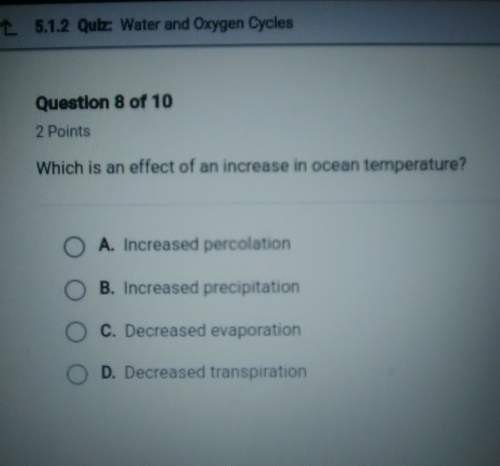
Biology, 23.04.2021 16:20 lolyourenotpoppunk
In the following Punnett square, what is the phenotypic percentages of the offspring? From dwarfism slideshow - length of legs.


Answers: 1
Another question on Biology

Biology, 22.06.2019 07:30
Directions: read the descriptions of the four islands presented in the lesson. 1. list two new traits that each new species of rat might demonstrate as it adapts to the conditions on each island. 2. introduce one of the four new rat species to another island and describe one challenge it would encounter and one success as it adapts to its new environment.
Answers: 2

Biology, 22.06.2019 14:00
The (blank) states that all loving things are made of cells.
Answers: 1

Biology, 22.06.2019 20:30
Our planet has experienced five major extinctions in the four billion year history of life. the first, 450 million years ago, occurred shortly after the evolution of the first land-based plants and 100 million years after the cambrian explosion. the second extinction occurred 350 million years ago, causing the formation of coal forests. next earth experienced two mass extinctions during the triassic period, between 250 and 200 million years ago. the fifth mass extinction occurred 65 million years ago, ending the reptilian dominance of the earth. according to richard leakey, the sixth mass extinction is happening right now. leakey suggests that we, the human race, are the cause. each year, at our hand, approximately 50,000 species vanish from earth. he believes that man is destroying earth at a rate comparable with the impact of a giant asteroid. leakey's statistics indicate that 50% of earth's species will become extinct within the next 100 years assuming leakey's hypothesis of a sixth mass extinction to be true, how will we expect the model to change? a) a sharp spike in the graph approximately 100 million years from now b) a dip in the graph, followed by a sharp spike about 100 million years from now c) a sharp spike in the graph immediately following the "0" location of the x axis d) a plateau following the "0" mark on the x axis, followed by a gradual rise to a new peak
Answers: 3

Biology, 22.06.2019 22:30
Explain in your own words what caused pangea to separate and why we don't worry about earthquakes in florida.
Answers: 1
You know the right answer?
In the following Punnett square, what is the phenotypic percentages of the offspring? From dwarfism...
Questions





History, 11.01.2020 19:31


Mathematics, 11.01.2020 19:31

Mathematics, 11.01.2020 19:31







Mathematics, 11.01.2020 19:31

History, 11.01.2020 19:31

English, 11.01.2020 19:31

Mathematics, 11.01.2020 19:31

Health, 11.01.2020 19:31

Health, 11.01.2020 19:31




